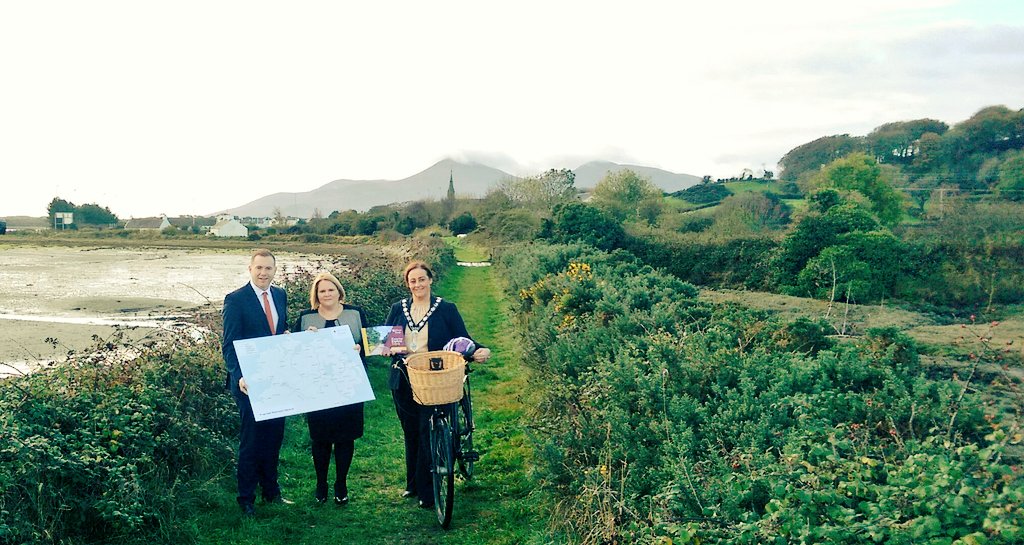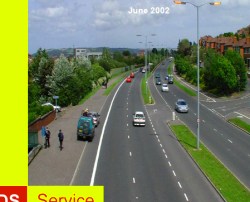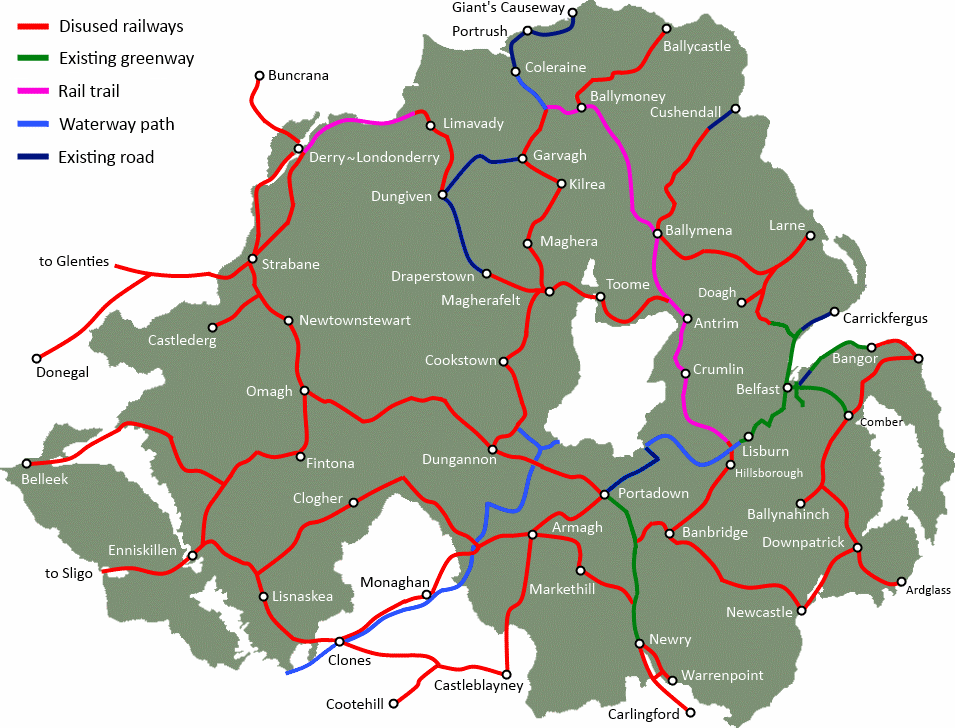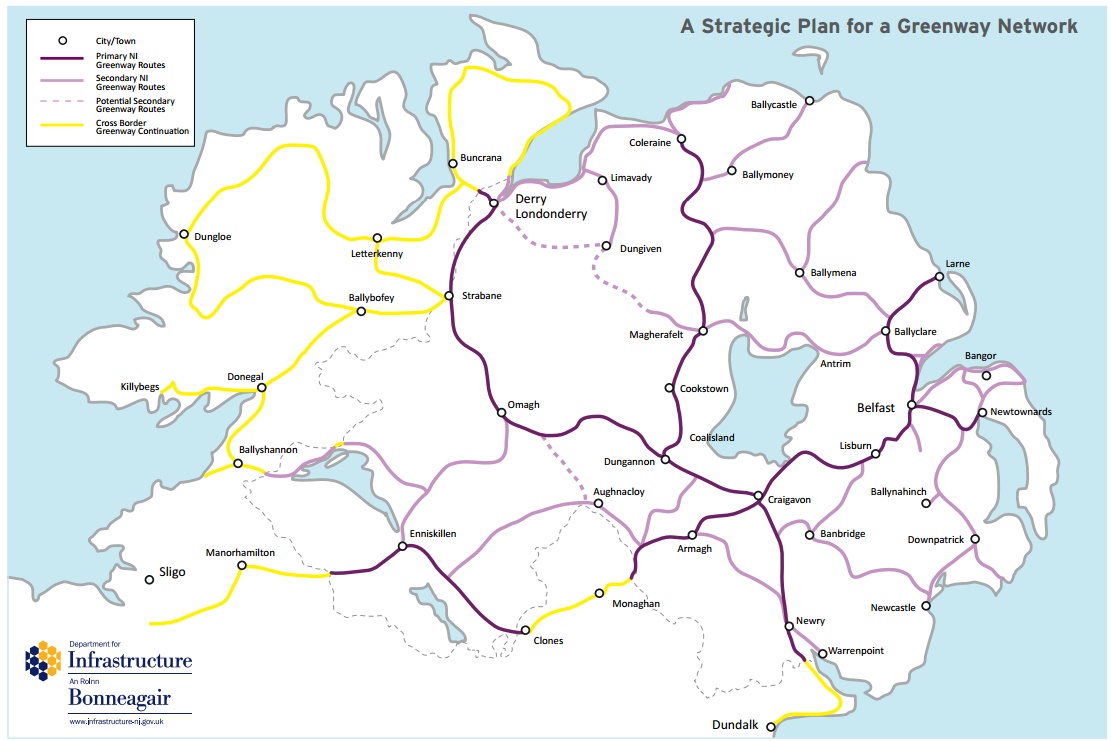
Minister for Infrastructure Chris Hazzard has set an ambitious £150 million plan to begin delivery of a 1,000km network of greenways across Northern Ireland over the next 10 years.

The Strategy was developed by the Department along with AECOM and Sustrans using a methodology to assess the relative benefits of individual schemes which led to the formation of a three-tiered approach. A Primary Network will provide the spine of the overall plan:
The Primary Network of around 400km includes many of the main areas of population and reaches some major tourist attractions. It provides the basis for a connected regional network. The East – West (Larne to Belcoo) route includes the east section of EuroVelo Route 1 (between Larne and Craigavon). The North – South (Derry to Newry) route includes the west section. The Causeway Coast is reached via a Central route.
There are seven individual sections to the Primary Network, estimated in the region of £60m to complete and the Strategy sets a target of 75% of this to be delivered within 10 years.
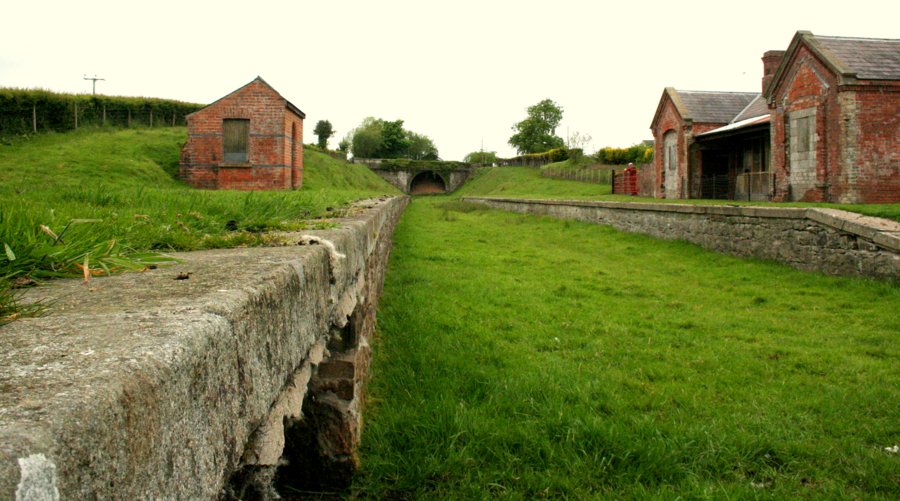
The Secondary Network encompasses most of the other schemes identified between the original NI Greenways vision, AECOM and Sustrans work and input from Councils:
“The Secondary Network of around 600km would extend the reach of the Greenway Network more widely. It includes some excellent routes and Councils may decide to develop these sections for more local reasons. It would not be the intention that all of the Primary Network must be completed before work begins on the Secondary Network. Some of these routes may be more easily designed.”
There are 20 individual sections to the Secondary Network, estimated in the region of £90m to complete and the target is for 25% of this to be delivered within 10 years.
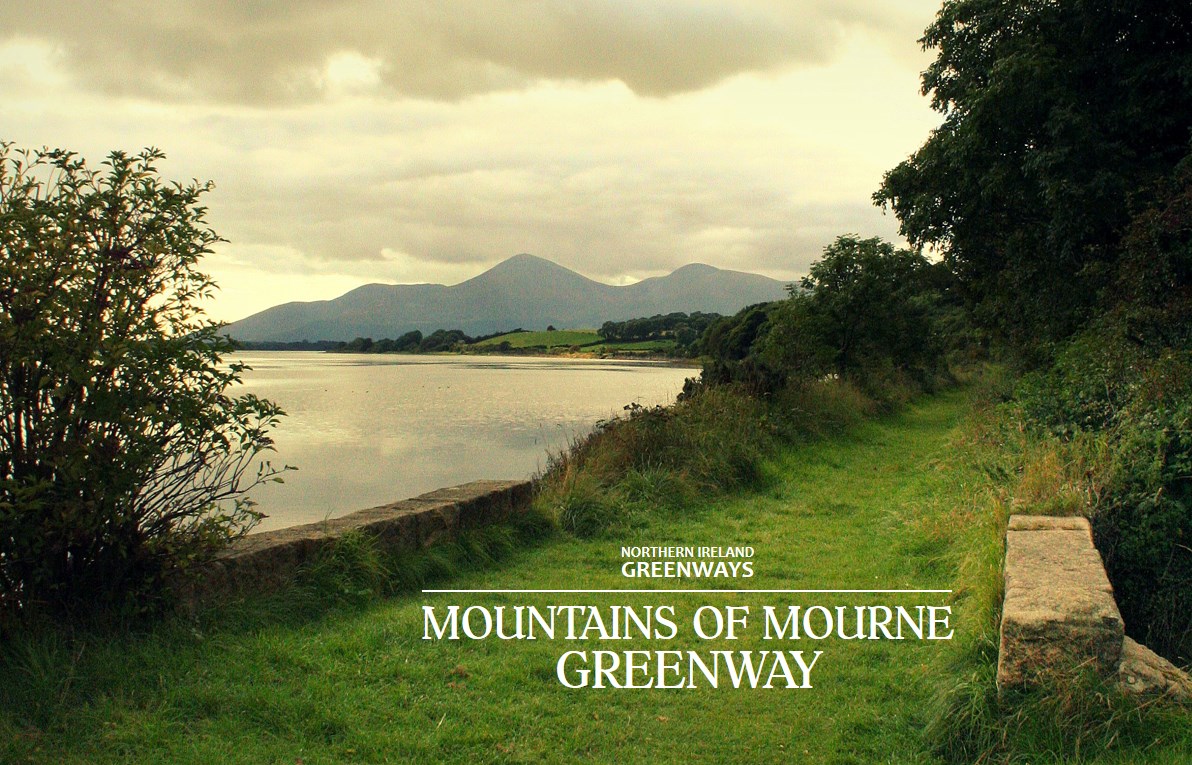
The strategy allows for new schemes to be proposed and taken forward should they be identified:
“Future plans may provide for a third level network of community paths that would provide doorstep opportunities to connect local communities to their local green space and neighbouring communities.”
The Department is setting the overall vision for the greenway network, including design standards and grants schemes to aid delivery, but Northern Ireland’s 11 local councils will be expected to take the lead on delivery on the ground:
“Councils have a key role in the delivery of the Greenway Network. The purpose of this Strategic Plan is to provide a framework to assist Councils and other bodies to develop their own local schemes as part of a Greenway Network for the entire region.”

Minister Hazzard has made clear his vision to see this kind of active travel infrastructure extended throughout Ireland:
“As the first Minister for Infrastructure my focus is on sustainable transport. Greenways can make a huge difference to the daily lives of people by providing the opportunity to enjoy safe and easy access to fresh air and exercise, encouraging more people to commute to work by foot or bicycle, more children to walk or cycle to school, and provide a vital leisure resource for local people and visitors alike.
@ChrisHazzardSF launches his plan for 1000km of greenway paths across the north @nigreenways pic.twitter.com/hk0PShpg2W
— Department for Infrastructure (@deptinfra) November 9, 2016
“This plan sets out my vision and framework for a more strategic and ambitious programme to develop greenway routes right across the whole of the north. I believe that greenways and similar community paths will ultimately create public spaces that will enhance our quality of life and leave an enduring legacy to be enjoyed by future generations.”
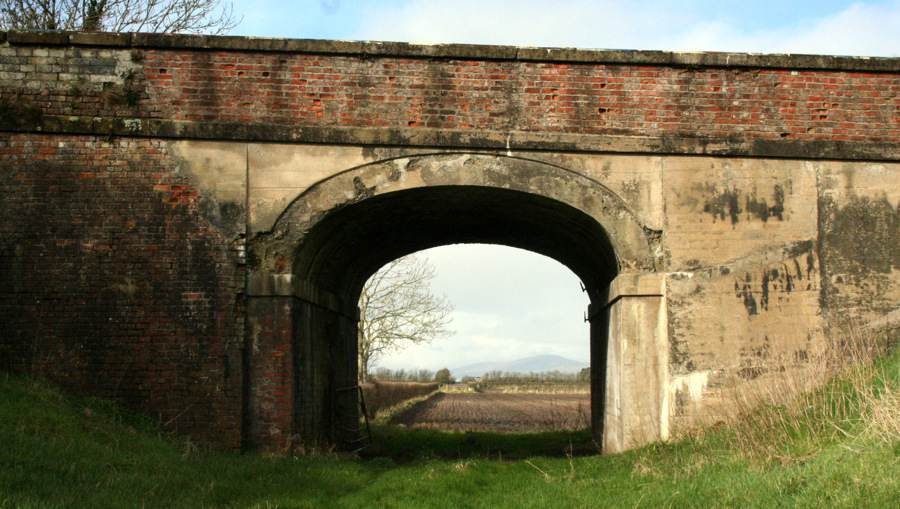
Welcoming the Minister’s announcement, Sustrans Northern Ireland Director Gordon Clarke said:
“Supporting rural regeneration through the development of traffic-free greenways was a priority policy area in our Manifesto ahead of last May’s Assembly elections.
“Across the UK we recognise the huge benefits these greenways have for local people. Greenways help to get people walking and cycling for leisure, commuting and school journeys. They also boost local businesses and have a wider tourism potential.
“The delivery of this vision, however, will require a commitment to substantial long-term capital investment from the Northern Ireland Executive.”
Small Grants Programme
So where is the money coming from? There’s no point in setting a vision without backing it up with the means to deliver. Luckily the Minister has already pushed the Strategy forward by inviting local councils to compete for grants to establish the initial stages of Greenways projects.
Remarkably, all 11 local councils responded at Stage 1 with 27 individual project proposals. The competition ran over summer 2016 and 20 greenway projects were successful and will now receive £8,000 funding.
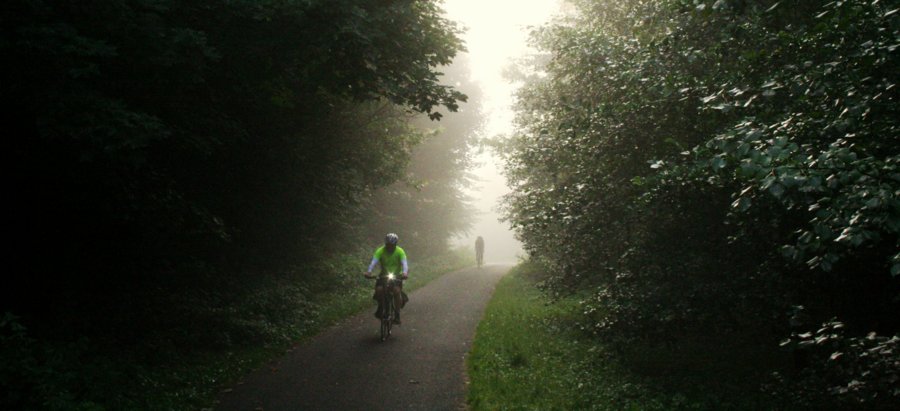
This total £160,000 in grants will enable successful councils to develop concept design options through a feasibility study for their proposed greenway schemes in Stage 2.
For Stage 3 a number of the highest quality of these feasibility studies will be selected to each receive £25,000 to develop a full business case and detailed design for their proposal.
The councils and projects to receive the funding are:
Ards and North Down – three grants (£24,000 in total. £8,000 to each greenway scheme)
- Comber to Newtownards greenway
- Orlock Point to Donaghadee greenway
- Orlock Point to Holywood greenway
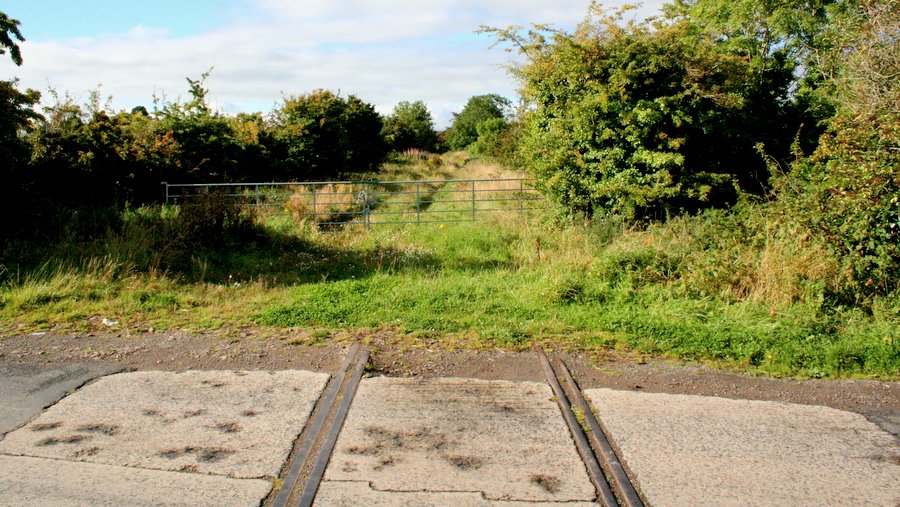
Fermanagh and Omagh – two grants (£16,000 in total. £8,000 to each greenway scheme)
- Enniskillen to Clones greenway
- Omagh to Carrickmore greenway
Armagh, Banbridge and Craigavon – Four grants (£32,000 in total, £8,000 to each greenway scheme)
- Craigavon to Aghagallon greenway
- Portadown – (North of) Moy greenway
- Banbridge to Scarva greenway
- Portadown – Caledon (via Armagh) greenway
Newry, Mourne and Down – four grants (£32,000 in total. £8,000 to each greenway scheme)
- Carlingford Lough greenway
- Downpatrick to Newcastle greenway
- Downpatrick to Ardglass greenway
- Comber to Downpatrick greenway
Antrim and Newtownabbey – one grant (£8,000)
- Doagh to Larne greenway
Lisburn and Castlereagh – one grant (£8,000)
- Carryduff greenway
Causeway Coast and Glens – one grant (£8,000)
Derry and Strabane – one grant (£8,000)
- North West Greenway
Mid and East Antrim – one grant (£8,000)
Mid Ulster – two grants (£16,000 in total. £8,000 to each greenway scheme)
- Clogher Valley Greenway
- Ulster Canal Greenway
The plans for major capital investment to deliver shovel-ready projects after Stage 3 will be worked on in the coming months.
Download: Exercise, Explore, Enjoy – A Strategic Plan for Greenways (PDF)
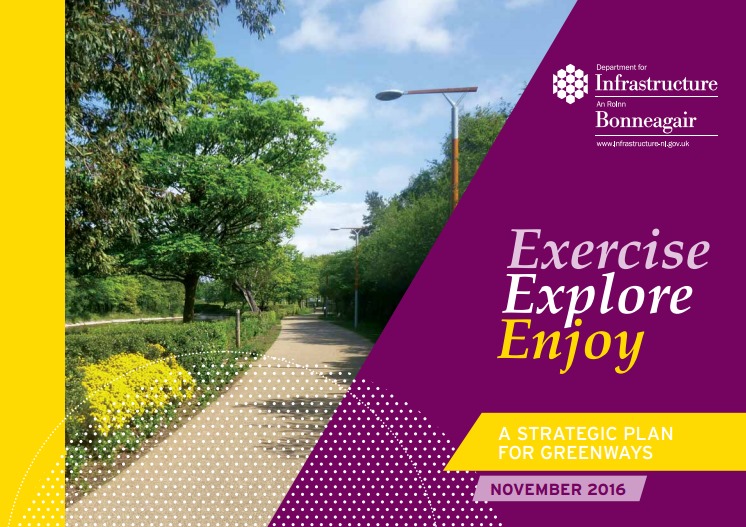
Comment
It’s an exciting day capping four and a half years of voluntary campaigning to raise awareness of the Northern Ireland Greenways vision.
Took eldest wee'n here on Sat, promised we'd be back within 10yrs to cycle along a greenway; campaign starts in 7days pic.twitter.com/aWeOZ8eGns
— NI Greenways (@nigreenways) August 31, 2015
We now have central and local government working together on a plan to create a 1,000km network extending across the country and across the border. If delivered, this will be a welcome mat to the world, placing a traffic-free path network at the centre of our tourism offering, and regenerating communities all over the country – rural and urban, west and east of the Bann, north and south of the border.
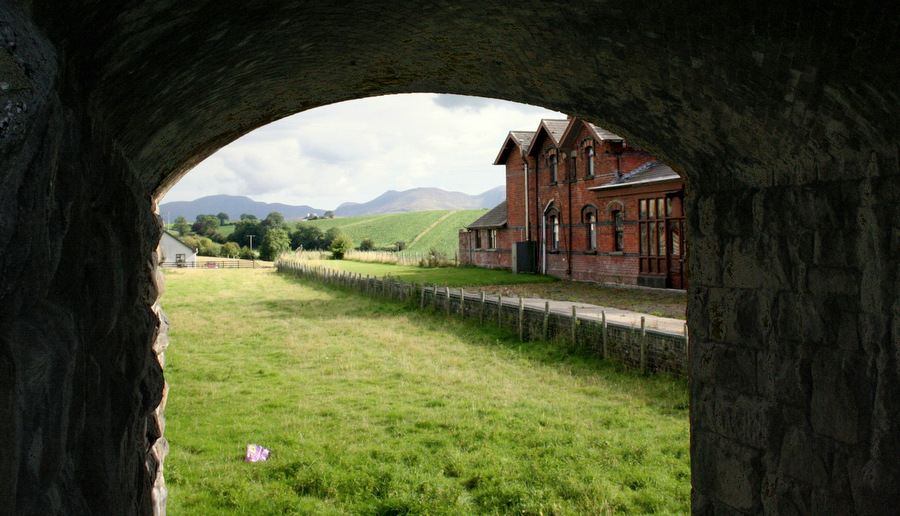
We should also be able to count on a smooth ride to delivery over the current Northern Ireland Assembly term, given that 77 of 108 returned MLAs pledged their support to development of a greenway network as party of the Election Cycle campaign – a tough promise to go back on, even in these heady days of opposition politics at Stormont.
Personally I’d like to thank Chris Hazzard, his ministerial predecessors Michelle McIlveen and Danny Kennedy for driving this Strategy; Sustrans NI and Cycling UK for their support in the campaign; all the good heads in the GB Cycling Embassy, Cyclist.IE and various campaign groups I’ve been lucky to interact with; some excellent local politicians and the amazing Cycling Unit staff within the Department for Infrastructure.
Funds for 1,000km of greenways in Northern Ireland: https://t.co/2XCj0yX1YI pic.twitter.com/XmZmelyyTJ
— UTV Live News (@UTVNews) November 9, 2016
NI greenways plan 'needs major investment' https://t.co/HL3dLQBRuC
— BBC Newsline (@bbcnewsline) November 9, 2016
@ChrisHazzardSF gives green light to 1000km of greenways https://t.co/CteKfAgZvQ @nigreenways @mea_bc @dcsdcouncil @ANBorough @lisburnccc pic.twitter.com/hYlMXZVkRG
— Department for Infrastructure (@deptinfra) November 9, 2016
